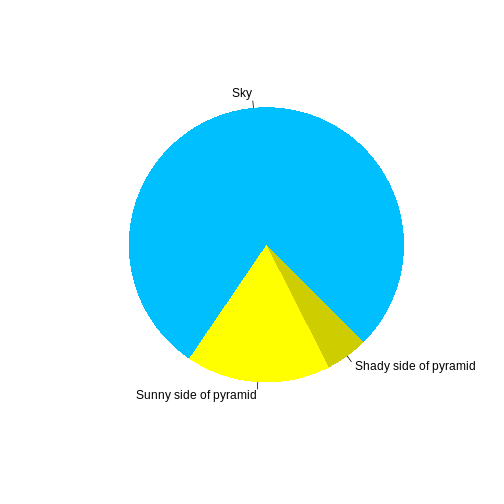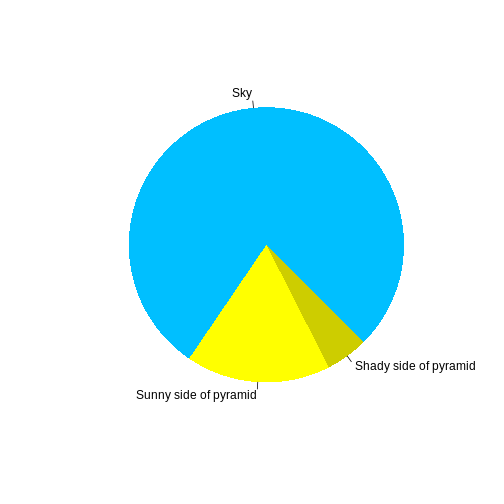Content from Introduction to DNA Data
Last updated on 2025-04-01 | Edit this page
Overview
Questions
- Where do DNA data come from?
- What do the look like?
Objectives
Biodiversity observation ain’t easy
“Observing biodiversity ain’t easy—too many species out there! By the time you figure out what you’re lookin’ at, it’s already somethin’ else!”
- Yogi Berra never said this

There are many ways to observe biodiversity.
Strengths of DNA as biodiversity evidence
DNA helps, but it’s not a silver bullet
DNA at GBIF: how it is accessed and used
Spectrum of Use Cases
Spectrum of Approaches
Introduction to NCBI and MixS standard
It’s ok to not have it all figured out yet
Content from Example Datasets
Last updated on 2025-04-01 | Edit this page
Overview
Questions
- How do you write a lesson using R Markdown and sandpaper?
Objectives
- Explain how to use markdown with the new lesson template
- Demonstrate how to include pieces of code, figures, and nested challenge blocks
Introduction
This is a lesson created via The Carpentries Workbench. It is written
in Pandoc-flavored Markdown
for static files (with extension .md) and R Markdown for dynamic files
that can render code into output (with extension .Rmd).
Please refer to the Introduction to The
Carpentries Workbench for full documentation.
What you need to know is that there are three sections required for a valid Carpentries lesson template:
-
questionsare displayed at the beginning of the episode to prime the learner for the content. -
objectivesare the learning objectives for an episode displayed with the questions. -
keypointsare displayed at the end of the episode to reinforce the objectives.
Challenge 1: Can you do it?
What is the output of this command?
R
paste("This", "new", "lesson", "looks", "good")
OUTPUT
[1] "This new lesson looks good"Challenge 2: how do you nest solutions within challenge blocks?
You can add a line with at least three colons and a
solution tag.
Figures
You can include figures generated from R Markdown:
R
pie(
c(Sky = 78, "Sunny side of pyramid" = 17, "Shady side of pyramid" = 5),
init.angle = 315,
col = c("deepskyblue", "yellow", "yellow3"),
border = FALSE
)

Or you can use pandoc markdown for static figures with the following syntax:
{alt='alt text for accessibility purposes'}
Math
One of our episodes contains \(\LaTeX\) equations when describing how to create dynamic reports with {knitr}, so we now use mathjax to describe this:
$\alpha = \dfrac{1}{(1 - \beta)^2}$ becomes: \(\alpha = \dfrac{1}{(1 - \beta)^2}\)
Cool, right?
Key Points
- Use
.mdfiles for episodes when you want static content - Use
.Rmdfiles for episodes when you need to generate output - Run
sandpaper::check_lesson()to identify any issues with your lesson - Run
sandpaper::build_lesson()to preview your lesson locally
Content from The MDT
Last updated on 2025-04-01 | Edit this page
Overview
Questions
- How do you write a lesson using R Markdown and sandpaper?
Objectives
- Explain how to use markdown with the new lesson template
- Demonstrate how to include pieces of code, figures, and nested challenge blocks
Introduction
This is a lesson created via The Carpentries Workbench. It is written
in Pandoc-flavored Markdown
for static files (with extension .md) and R Markdown for dynamic files
that can render code into output (with extension .Rmd).
Please refer to the Introduction to The
Carpentries Workbench for full documentation.
What you need to know is that there are three sections required for a valid Carpentries lesson template:
-
questionsare displayed at the beginning of the episode to prime the learner for the content. -
objectivesare the learning objectives for an episode displayed with the questions. -
keypointsare displayed at the end of the episode to reinforce the objectives.
Challenge 1: Can you do it?
What is the output of this command?
R
paste("This", "new", "lesson", "looks", "good")
OUTPUT
[1] "This new lesson looks good"Challenge 2: how do you nest solutions within challenge blocks?
You can add a line with at least three colons and a
solution tag.
Figures
You can include figures generated from R Markdown:
R
pie(
c(Sky = 78, "Sunny side of pyramid" = 17, "Shady side of pyramid" = 5),
init.angle = 315,
col = c("deepskyblue", "yellow", "yellow3"),
border = FALSE
)

Or you can use pandoc markdown for static figures with the following syntax:
{alt='alt text for accessibility purposes'}
Math
One of our episodes contains \(\LaTeX\) equations when describing how to create dynamic reports with {knitr}, so we now use mathjax to describe this:
$\alpha = \dfrac{1}{(1 - \beta)^2}$ becomes: \(\alpha = \dfrac{1}{(1 - \beta)^2}\)
Cool, right?
Key Points
- Use
.mdfiles for episodes when you want static content - Use
.Rmdfiles for episodes when you need to generate output - Run
sandpaper::check_lesson()to identify any issues with your lesson - Run
sandpaper::build_lesson()to preview your lesson locally
Content from Suggested Reading and References
Last updated on 2025-04-01 | Edit this page
Overview
Questions
- How can I learn more?
Objectives
- Become familiar with useful references.
Background on the Science
- The ecologist’s field guide to sequence‐based identification of biodiversity (Creer et al, 2016)
- Past, present, and future perspectives of environmental DNA (eDNA) metabarcoding: A systematic review in methods, monitoring, and applications of global eDNA (Ruppert et al., 2019)
- Critical considerations for communicating environmental DNA science (Stein et al., 2024)
- How, What, and Where You Sample Environmental DNA Affects Diversity Estimates and Species Detection (Kirtane et al., 2024)
- A Guide to Environmental DNA Extractions for Non‐Molecular Trained Biologists, Ecologists, and Conservation Scientists (Rieder et al., 2024)
Data Management and Standards
- Publishing DNA‐derived data through biodiversity data platforms. (Finstad et al., 2023)
- A Practical Approach to Using the Genomic Standards Consortium MIxS Reporting Standard for Comparative Genomics and Metagenomics (Eloe‐Fadrosh et al., 2024)
- The MIEM guidelines: Minimum information for reporting of environmental metabarcoding data. (Klymus et al. 2024)
- Best practices for genetic and genomic data archiving (Leigh et al., 2024)
- Centering accessibility, increasing capacity, and fostering innovation in the development of international eDNA standards (Hirsch et al., 2024)
Policy
- National Aquatic Environmental DNA Strategy (eDNA Task Team, 2024)
Standards Reference Material
- Publishing DNA‐derived data through biodiversity data platforms. (Finstad wt al., 2023)
Darwin Core
- Quick Reference Guide (term search): https://dwc.tdwg.org/terms/
- DNA Derived Data Extension: https://rs.gbif.org/extension/gbif/1.0/dna_derived_data_2022‐02‐23.xml
Data Management Tools
- GBIF Metabarcoding Data Toolkit (MDT): https://mdt.gbif.org/
- MDT User Guide: https://docs.gbif‐uat.org/mdt‐user‐guide/en/
- GBIF‐US MDT: https://mdt.gbif.us/ ; manager: Stephen Formel (sformel@usgs.gov)
- NOAA Omics Data Management Guide: https://noaa‐omics‐dmg.readthedocs.io/en/latest/
Community Pages
References
Creer, S., Deiner, K., Frey, S., Porazinska, D., Taberlet, P., Thomas, W.K., Potter, C., Bik, H.M., 2016. The ecologist’s field guide to sequence‐based identification of biodiversity. Methods in Ecology and Evolution 7, 1008–1018. https://doi.org/10.1111/2041‐210X.12574
eDNA Task Team of the Interagency Working Group on Biodiversity of the Subcommittee on Ocean Science and Technology Committee on Environment of the National Science & Technology Council. 2024. National Aquatic Environmental DNA Strategy. https://www.whitehouse.gov/wpcontent/uploads/2024/06/NSTC_National‐Aquatic‐eDNA‐Strategy.pdf
Eloe‐Fadrosh, E.A., Mungall, C.J., Miller, M.A., Smith, M., Patil, S.S., Kelliher, J.M., Johnson, L.Y.D., Rodriguez, F.E., Chain, P.S.G., Hu, B., Thornton, M.B., McCue, L.A., McHardy, A.C., Harris, N.L., Reddy, T.B.K., Mukherjee, S., Hunter, C.I., Walls, R., Schriml, L.M., 2024. A Practical Approach to Using the Genomic Standards Consortium MIxS Reporting Standard for Comparative Genomics and Metagenomics, in: Setubal, J.C., Stadler, P.F., Stoye, J. (Eds.), Comparative Genomics: Methods and Protocols. Springer US, New York, NY, pp. 587–609. https://doi.org/10.1007/978‐1‐0716‐3838‐5_20
Finstad, A.G., Andersson, A., Bissett, A., Fossøy, F., Grosjean, M., Hope, M., Kõljalg, U., Lundin, D., Nilsson, H., Prager, M., Jeppesen, T.S., Svenningsen, C., Schigel, D., Abarenkov, K., Provoost, P., Suominen, S., Frøslev, T.G., 2023. Publishing DNA‐derived data through biodiversity data platforms. https://doi.org/10.35035/DOC‐VF1A‐NR22
Hirsch, S., Acharya‐Patel, N., Amamoo, P.A., Borrero‐Pérez, G.H., Cahyani, N.K.D., Ginigini, J.G.M., Hurley, K.K.C., Lopes‐Lima, M., Lopez, M.L., Mapholi, N., Ouattara, K.N., Pazmiño, D.A., Rii, Y., Thompson, F., Heyden, S. von der, Watsa, M., Yepes‐Narvaez, V., Allan, E.A., Kelly, R., 2024. Centering accessibility, increasing capacity, and fostering innovation in the development of international eDNA standards. Metabarcoding and Metagenomics 8, e126058. https://doi.org/10.3897/mbmg.8.126058
Leigh, D.M., Vandergast, A.G., Hunter, M.E., Crandall, E.D., Funk, W.C., Garroway, C.J., Hoban, S., OylerMcCance, S.J., Rellstab, C., Segelbacher, G., Schmidt, C., Vázquez‐Domínguez, E., Paz‐Vinas, I., 2024. Best practices for genetic and genomic data archiving. Nat Ecol Evol 8, 1224–1232. https://doi.org/10.1038/s41559‐024‐02423‐7
Kirtane, A., Howard, L., Beaver, C.E., Hunter, M.E., Luikart, G., Deiner, K., 2024. How, What, and Where You Sample Environmental DNA Affects Diversity Estimates and Species Detection. Environmental DNA 6, e70042. https://doi.org/10.1002/edn3.70042
Klymus, K.E., Baker, J.D., Abbott, C.L., Brown, R.J., Craine, J.M., Gold, Z., Hunter, M.E., Johnson, M.D., Jones, D.N., Jungbluth, M.J., Jungbluth, S.P., Lor, Y., Maloy, A.P., Merkes, C.M., Noble, R., Patin, N.V., Sepulveda, A.J., Spear, S.F., Steele, J.A., Takahashi, M., Watts, A.W., Theroux, S., 2024. The MIEM guidelines: Minimum information for reporting of environmental metabarcoding data. Metabarcoding and Metagenomics 8, e128689. https://doi.org/10.3897/mbmg.8.128689
Rieder, J., Jemmi, E., Hunter, M.E., Adrian‐Kalchhauser, I., 2024. A Guide to Environmental DNA Extractions for Non‐Molecular Trained Biologists, Ecologists, and Conservation Scientists. Environmental DNA 6, e70002. https://doi.org/10.1002/edn3.70002
Ruppert, K.M., Kline, R.J., Rahman, M.S., 2019. Past, present, and future perspectives of environmental DNA (eDNA) metabarcoding: A systematic review in methods, monitoring, and applications of global eDNA. Global Ecology and Conservation 17, e00547. https://doi.org/10.1016/j.gecco.2019.e00547
Stein, E.D., Jerde, C.L., Allan, E.A., Sepulveda, A.J., Abbott, C.L., Baerwald, M.R., Darling, J., Goodwin, K.D., Meyer, R.S., Timmers, M.A., Thielen, P.M., 2024. Critical considerations for communicating environmental DNA science. Environmental DNA 6, e472. https://doi.org/10.1002/edn3.472
Content from Introduction to DwC DNA extension
Last updated on 2025-04-01 | Edit this page
Overview
Questions
- How do you write a lesson using R Markdown and sandpaper?
Objectives
- Explain how to use markdown with the new lesson template
- Demonstrate how to include pieces of code, figures, and nested challenge blocks
Content from Conceptual modeling of datasets
Last updated on 2025-04-01 | Edit this page
Overview
Questions
- How do you write a lesson using R Markdown and sandpaper?
Objectives
- Explain how to use markdown with the new lesson template
- Demonstrate how to include pieces of code, figures, and nested challenge blocks
Introduction
This is a lesson created via The Carpentries Workbench. It is written
in Pandoc-flavored Markdown
for static files (with extension .md) and R Markdown for dynamic files
that can render code into output (with extension .Rmd).
Please refer to the Introduction to The
Carpentries Workbench for full documentation.
What you need to know is that there are three sections required for a valid Carpentries lesson template:
-
questionsare displayed at the beginning of the episode to prime the learner for the content. -
objectivesare the learning objectives for an episode displayed with the questions. -
keypointsare displayed at the end of the episode to reinforce the objectives.
Challenge 1: Can you do it?
What is the output of this command?
R
paste("This", "new", "lesson", "looks", "good")
OUTPUT
[1] "This new lesson looks good"Challenge 2: how do you nest solutions within challenge blocks?
You can add a line with at least three colons and a
solution tag.
Figures
You can include figures generated from R Markdown:
R
pie(
c(Sky = 78, "Sunny side of pyramid" = 17, "Shady side of pyramid" = 5),
init.angle = 315,
col = c("deepskyblue", "yellow", "yellow3"),
border = FALSE
)

Or you can use pandoc markdown for static figures with the following syntax:
{alt='alt text for accessibility purposes'}
Math
One of our episodes contains \(\LaTeX\) equations when describing how to create dynamic reports with {knitr}, so we now use mathjax to describe this:
$\alpha = \dfrac{1}{(1 - \beta)^2}$ becomes: \(\alpha = \dfrac{1}{(1 - \beta)^2}\)
Cool, right?
Key Points
- Use
.mdfiles for episodes when you want static content - Use
.Rmdfiles for episodes when you need to generate output - Run
sandpaper::check_lesson()to identify any issues with your lesson - Run
sandpaper::build_lesson()to preview your lesson locally
